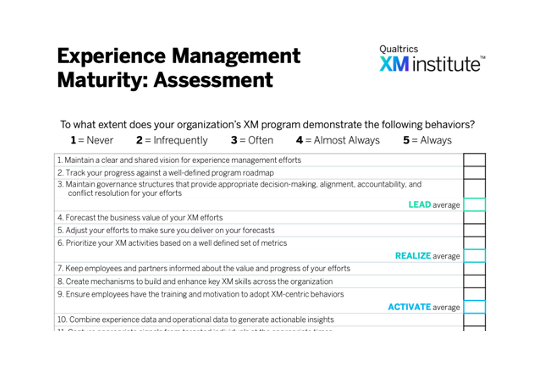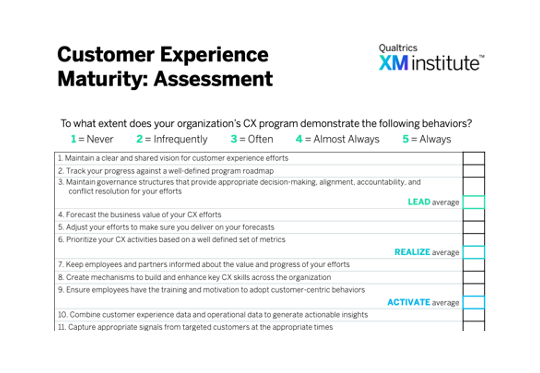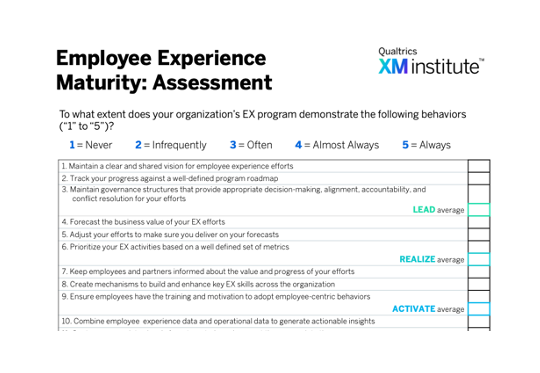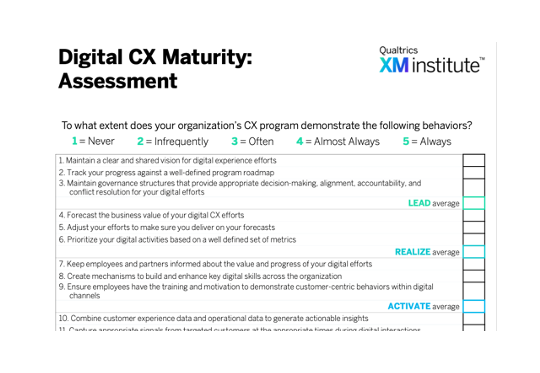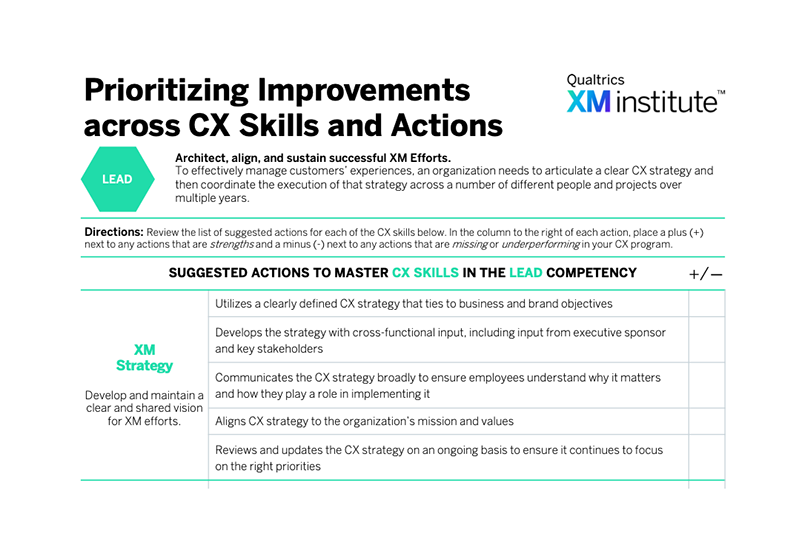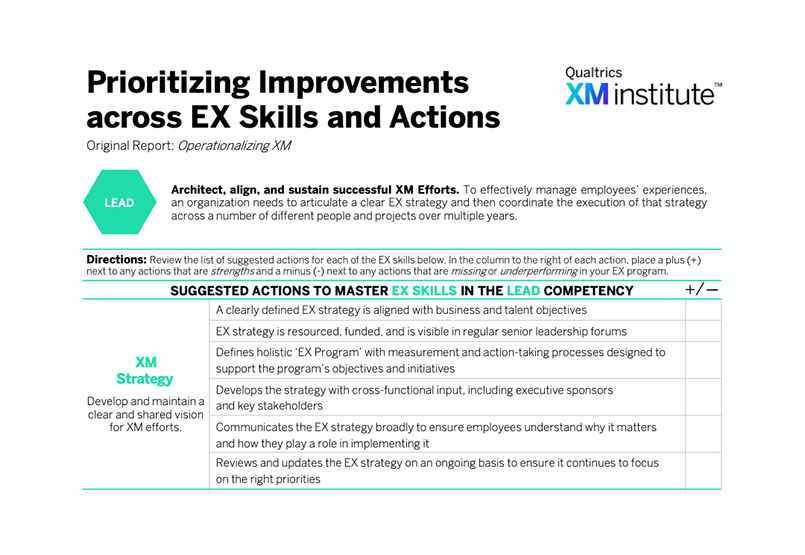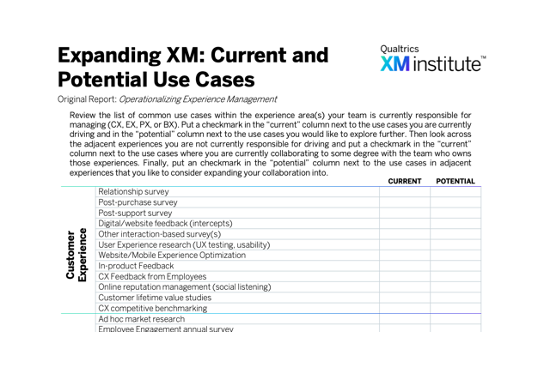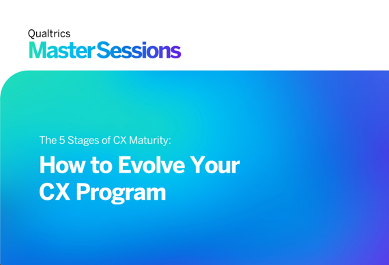Use this Launchpad as a starting place to understand the five stages of XM maturity and how to advance your XM program through these stages. Then explore the key resources included at the bottom of the page to expand your knowledge of this essential XM topic.
The Fundamentals
Our research shows that organizations with better Experience Management (XM) capabilities outperform their peers. Building a successful XM program, however, requires the organization to commit to a multi-year effort. To help guide businesses along this journey, we’ve created the XM Operating Framework, which you can think of as a blueprint for building your XM capabilities. So as organizations master the Framework’s six XM Competencies, they will progress through five stages of XM Maturity:
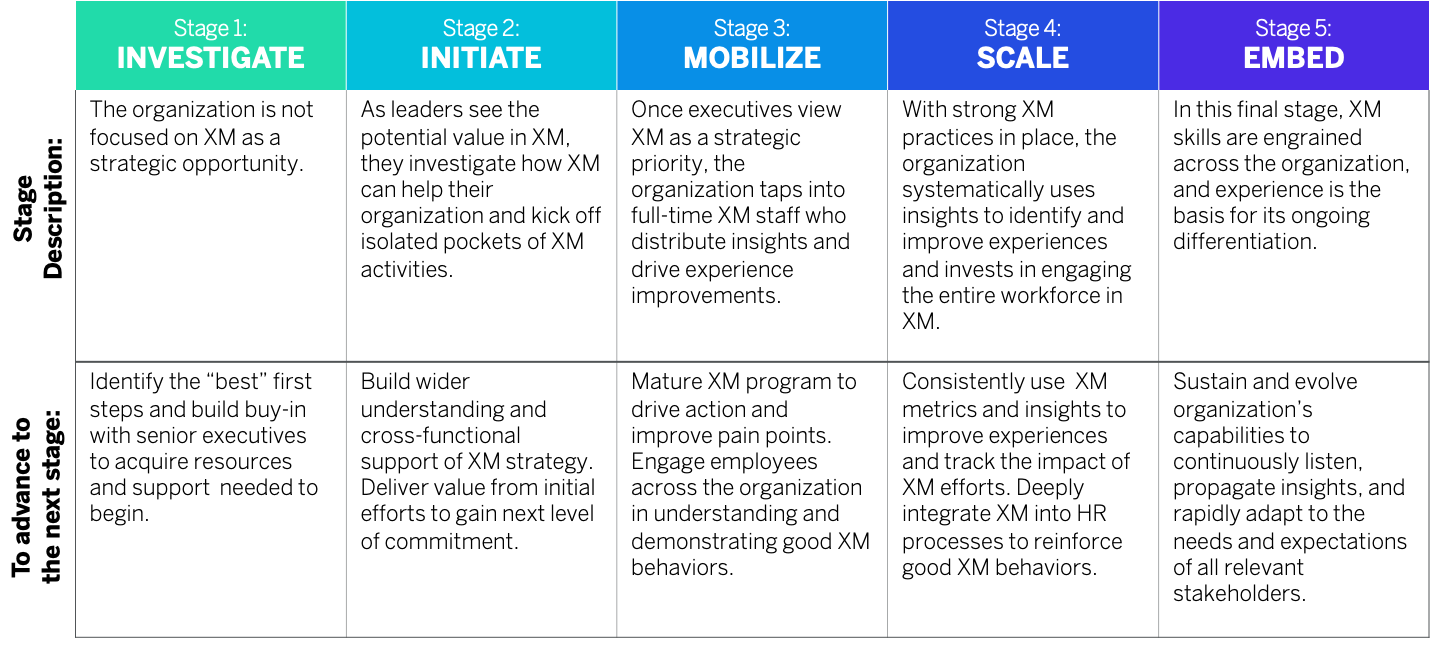
Stage 1: INVESTIGATE
In this first stage of maturity, the organization is not focused on XM as a strategic opportunity yet, although it may be supporting essential customer service or product development functions and may be investing in brand measurement, employee engagement, or other similar surveys.
Stage 2: INITIATE
As leaders begin to see the potential value in XM, they start to investigate how XM can help their organization and, consequently, assign an existing or newly created group responsibility for exploring what the organization needs to focus on to improve the experiences it delivers.
Stage 3: MOBILIZE
Once executives view XM as a strategic priority, the organization taps into full-time XM staff who guide efforts to mature and augment their insights programs, begin sharing role-based insights with a wider audience, and work cross-functionally to improve discrete experience pain points.
Stage 4: SCALE
With robust XM practices in place, the organization systematically uses insights to identify and improve experiences and infuses XM into its overall strategic priorities, operational processes, and work routines.
Stage 5: EMBED
In this final stage of maturity, XM skills are ingrained across the organization, and insights are captured across multiple, integrated touchpoints. The entire business is aligned around the value of XM.
Expanding XM Capabilities
As organizations’ XM capabilities grow and mature – as they evolve through the five stages – they will naturally begin to identify more and more opportunities for applying these capabilities across the business. As this expansion occurs, XM efforts will move through four phases:
Phase 1: Isolated
Organizations often start applying the XM discipline in one area of their business or across a few tightly related areas. For example, a company may kick off its XM efforts by taking action based on the results of a relationship NPS survey and a contact center post-transaction survey or by conducting an annual engagement study and a quarterly employee pulse survey.
Phase 2: Expanded
After building some XM maturity and seeing the value in the initial use cases, organizations will expand into other similar areas or enhance their existing capabilities. For instance, based on the results of its initial NPS and post-transaction surveys, a company may increase the number of its listening posts and add more advanced capabilities, such as text and predictive analytics.
Phase 3: Adjacent
Once there are several use cases underway, organizations move on to other experiences that impact the success of those activities. After expanding XM across multiple CX use cases, for instance, companies often recognize that they need to incorporate EX or BX activities into their efforts to achieve their CX goals.
Phase 4: Extended
After applying XM to several experience areas, people across the organization will have a sincere appreciation for how XM leads to better business performance by helping it continuously learn, propagate insights, and rapidly adapt. Consequently, they will look to apply XM to each new experience they create, whether it’s launching a new product or rolling out a new community fundraising event. They’ll also start to focus on experiences that are outside of their control but within their spheres of influence, such as the EX delivered by recruiting partners or the CX delivered by distributors or other channel partners.
Tips for Taking Action
So how should a company go about maturing its XM program? Here are some tips for taking action:
Assess your current maturity level
To understand the current state of your program, assess the maturity of your XM, CX, Digital CX, or EX program (an online version of the CX assessment is also available). While you can complete this assessment as an individual activity, we suggest doing it as a group exercise, which will help you collect more insights and a broader range of perspectives. We also suggest retaking this assessment every 12-18 months to track your XM progress.
Plan for a long-term journey
XM maturity is not achieved through a handful of projects, and it doesn’t happen within a single year. It must instead be the core of a multi-year commitment to building a set of capabilities that will ultimately make the organization more responsive to signals and changes in the marketplace. Because XM enables organizations to more effectively sense, interpret, and react to their environments, increasing XM maturity will make them more competitive in the long-run.
Secure senior executive commitment
The success of any XM transformation requires active support from senior executives. As organizations become more mature, XM impacts more departments and touches more processes across the business. If the senior leaders don’t collectively view these changes as critical – if they don’t communicate why change is necessary, model desired behaviors, or hold the organization accountable for results – these transformation efforts will ultimately fail.
Avoid common obstacles to XM progress
Organizations that lag behind in their industries when it comes to XM performance most frequently cite three obstacles as impediments to success: lack of a clear strategy, technology limitations, and lack of funding. As you plan your organization’s roadmap toward XM maturity, proactively work with senior executives to address and mitigate these common impediments to Experience Management progress.
Routinely track progress and review results
XM maturity is built over time through planning, iteration, and cross-functional collaboration. To chart your path to maturity, regularly assess your performance and maturity against the XM competencies, discuss those results alongside your organizational goals, and identify gaps in your XM program and key areas to focus on over the next 6, 12, and 24 months.


